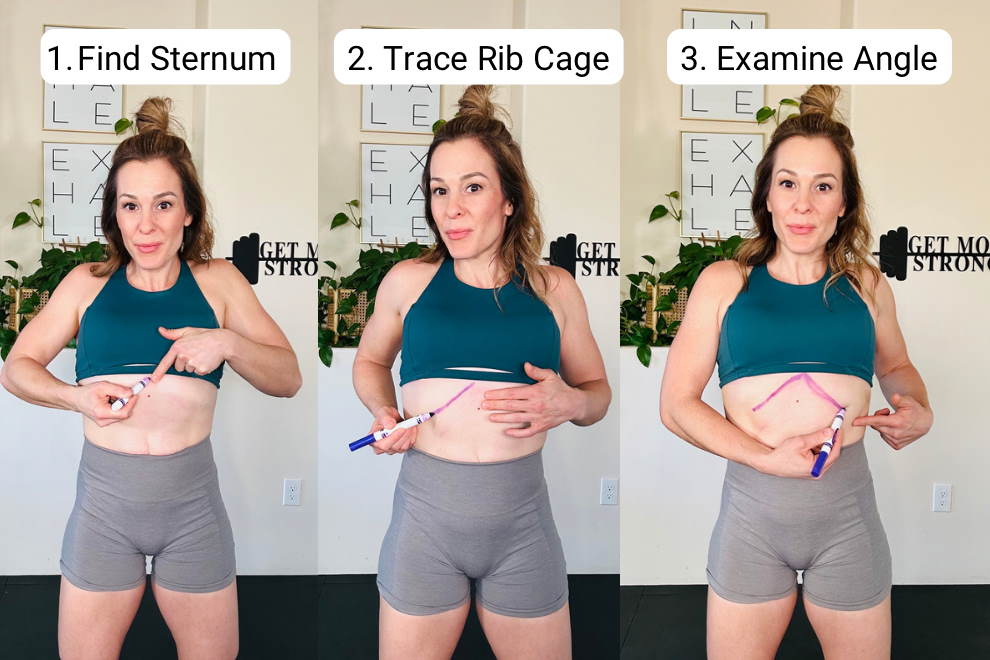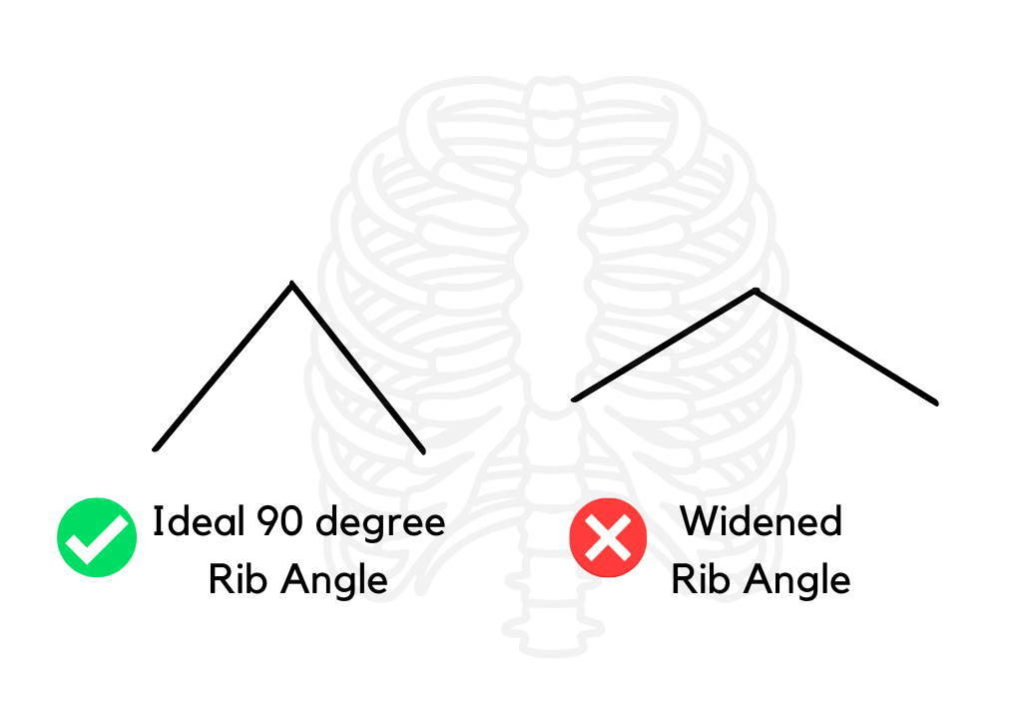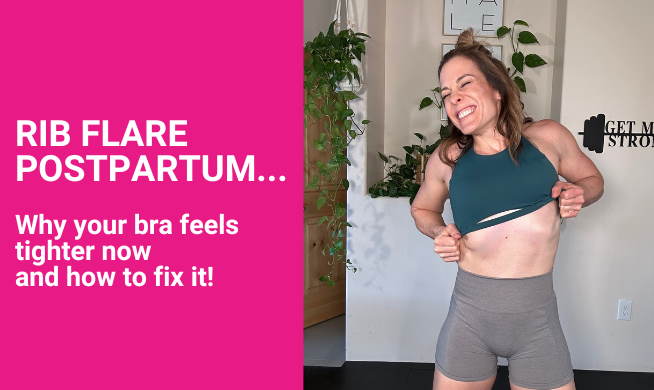Have you noticed that your bra band is much tighter postpartum? It could be a case of postpartum rib flare.
This isn’t just in your head! It is very common for ribs to flare and expand during pregnancy. These changes often carry over long after baby’s arrival.
Annoying bra tightness aside, a lingering rib flare can prevent diastasis recti healing, cause back pain, and even increase incontinence and prolapse symptoms.
What causes rib flare?
During pregnancy, the baby quite literally pushes all the internal organs up. As a result, the rib cage expands and widens to make room for this demand.
You might even notice your left rib is more flared postpartum than the right side. This is because more organs live on the left side.
Most people have some left rib flare even prior to pregnancy due to the diaphragm attaching lower on the right side. This diaphragm attachment makes it easier for your body to keep the right ribs in check!
This internal “smooshing”, accompanied by postural changes from pregnancy, can create a pronounced rib flare. This can affect your breathing patterns and your abdominal muscles.
How do I perform a rib flare test?

It is easy to see if flared ribs are the cause of your tighter bra postpartum. Here is how to check.
- Grab a mirror and a marker.
- While looking in the mirror, trace the front of the rib cage starting from the sternum.
- Check if your rib cage angle is greater than 90 degrees.
Is your rib cage wider than a 90 degree angle? If so, you probably have a lingering rib flare.

Is rib flare dangerous?
In short, no!
The longer answer? Rib flare can make it harder to breathe properly, which has a direct impact on your ability to engage the deep core muscles and pelvic floor. This can cause some added struggle when trying to heal diastasis recti, improve prolapse, and reduce urinary incontinence.
The diaphragm sits under the rib cage. Your ribs are meant to expand and open when you inhale (like an umbrella) and then retract back on the exhale. When ribs are expanded too wide, it shifts the body’s natural breathing mechanics.
Your body is basically in a state of inhalation all the time. As a result, most postpartum moms will compensate by breathing up into the chest instead of down into the body. This shuts off the abdominals and can create pelvic floor tightness.
The diaphragm and pelvic floor are meant to work together like a piston on a train. When you can’t get a good inhale and exhale, it can also have trickle down effects on the pelvic floor (pun intended).
You may notice an increase in anxiety, pain with intercourse, constipation, tailbone pain and more.
How do I fix flared ribs?
Great news! We can retrain the core muscles and vastly improve rib flare. This will help so much with your diastasis recti and pelvic floor healing postpartum.
Improving your posture
One of the first steps to improving a rib flare is to be mindful of posture throughout the day and during your exercise sessions.
As often as possible, think about stacking your rib cage over your pelvis. Vary your posture throughout the day by staggering your stance.
During exercise, watch your posture in a mirror. This is particularly important in movements where you reach your arms overhead–like a shoulder press.
When the weight is too heavy, the body naturally compensates by recruiting the low back, which can put strain on the lumbar spine and worsen your postpartum core. Try using lighter weights until your core strength improves.
Again, staggering your stance can also help when lifting weights overhead, as it puts your ribs and pelvis in a more neutral position.
Doing core exercise
Strengthening your core can make a big difference in improving rib flare.
Focus on exercises that strengthen the deep core muscles, more formally called the transverse abdominis. These muscles act like a natural corset and help to pull your body into a better position.
As you perform these core exercises, focus on a powerful exhale. As you do, think about “squishing” your ribs down. This helps train the core muscles and better align the body.
Check out my Core Basics Program where I give you the tools you need to fix your postpartum rib flare!
